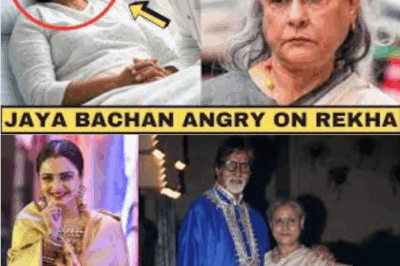Mahak Pari Reels News: Another dirty reel went viral, Mahak-Pari with obscene content herself told the truth
In an age where social media has become the most powerful tool for self-expression and fame, the story of Mahak and Pari from Shahbazpur Kala village in Sambhal, India, serves as a telling case of the blurred lines between popularity and responsibility. The two young girls, now viral sensations, found themselves at the center of a national debate over content ethics, societal influence, and the growing impact of online behavior on real-life consequences.
Mahak and Pari rose to prominence not through traditional means, but via videos they posted on social media platforms. In a recent interview, they detailed their journey, explaining how what began as innocent content creation soon took a different direction. Initially, the videos they made were simple: showcasing their shopping experiences, documenting their meals, and other day-to-day activities. These videos attracted modest attention—generating only around 1,500 to 2,000 views. However, this changed drastically when they shifted to a different style of content.
They began to post videos featuring abusive language, aggressive behavior, and controversial dialogues. These videos, as Mahak confessed, were inspired by content they saw other creators make. “We copied those videos thinking maybe ours would also go viral,” she admitted. And they did. One video reached 60 million views, another crossed the 100 million mark. With the sudden spike in popularity came a wave of followers, making them internet celebrities almost overnight.
However, fame didn’t bring universal admiration. Many viewers, including members of their own community, criticized the content. The use of offensive language and inappropriate behavior, especially from young women in a conservative rural society, sparked outrage. Complaints began pouring in, and soon the matter reached law enforcement. Police initiated action, and the court intervened, eventually granting the girls conditional bail.

In the aftermath of their legal troubles, Mahak and Pari have come forward expressing regret. In a candid interview, Mahak apologized to viewers who were offended by their content. “We are sorry if anyone’s feelings were hurt. We will not make such videos again,” she said with sincerity. This moment of reflection seemed genuine, as she admitted they had made mistakes under the influence of online trends and peer pressure.
She also clarified a significant point of concern—allegations from locals suggesting she charged money to appear in videos or report to the police were false. “People are saying I took one lakh rupees and went to the police, but that’s all lies,” she responded. Mahak’s statements reveal the extent to which online fame can affect real-life reputations, especially for young women in small-town India.
When questioned about their education, Mahak revealed she had studied up to the 10th standard and also learned Arabic. This information underscores the limited access to education and awareness about digital responsibility in many parts of India, especially among rural youth. The knowledge gap can often lead to unintended consequences when navigating the complex and fast-moving world of social media.
Mahak went on to explain that some of the recent controversial videos circulating under her name were not actually posted by her. She claimed that fake accounts mimicking her profile were uploading old or edited content, leading many to believe she was still creating objectionable material even after her court appearance. “We haven’t uploaded anything recently. Our phone isn’t even with us right now,” she stated. This raises another serious issue plaguing social media—impersonation and content theft.
Their rise to fame had also brought them into contact with other social media figures. Mahak mentioned working in a series called “Jugnu Pari” along with Hina from Amroha and another creator named Jarar Alam. These connections were formed via Instagram and mutual acquaintances, and they collaborated on videos aimed at entertainment. Mahak claimed these projects were far more constructive and had a positive message.

When asked about how she felt about children watching her past videos filled with foul language, Mahak admitted that it made her feel bad. She accepted her error, stating, “I felt bad too. We realize our mistake now. Everyone told us not to make such videos, and we agree.” This sense of regret, coupled with her acknowledgment of the social impact of her content, shows a turning point in her journey.
The situation also throws light on how the Indian legal system and community feedback can work in tandem to correct the course of young influencers. While punitive action by the police and court helped put a stop to the objectionable content, it was also the voices of people from her village and followers that played a role in Mahak’s self-reflection.
Moving forward, Mahak and Pari expressed a commitment to change. They want to create meaningful, clean content that is enjoyable for both children and adults. Mahak concluded her statement by saying, “We will make good videos that people like, that are good for children and for society.”
This saga of two girls from a small village reaching millions on digital platforms and then facing the backlash of their choices is more than just a viral story. It is a reflection of the times we live in. With smartphones in every hand and internet access even in the most remote areas, content creation is no longer restricted to the urban elite. However, with this democratization comes a new set of challenges—ethical, legal, and societal.
The Mahak-Pari episode serves as a cautionary tale not just for content creators, but also for platforms, parents, and policymakers. There is an urgent need for digital literacy programs that can help young people understand the responsibilities that come with digital freedom. Awareness about online behavior, cyber law, content guidelines, and the long-term consequences of viral fame should be taught as part of educational curriculums.
At the same time, social media platforms need to step up their efforts to prevent misuse, monitor hate speech, and crack down on impersonation. Mahak’s experience with fake accounts posting in her name illustrates the potential harm that digital impersonation can cause to a person’s image and safety.

In the end, Mahak and Pari’s story is one of early fame, missteps, and the possibility of redemption. Their willingness to change and the support or criticism of their community will determine whether they can truly leave behind the controversy and build a more responsible online presence. Their journey should prompt a broader dialogue about how we, as a society, nurture and monitor the digital aspirations of our youth in a world where a single viral video can change a life overnight.
Play video :
News
Ajay Devgn Reaction On Premanand Ji Maharaj Controversy | Premanand Ji Maharaj | Ajay Devgn
Ajay Devgn Reaction On Premanand Ji Maharaj Controversy | Premanand Ji Maharaj | Ajay Devgn The recent controversy surrounding spiritual…
Why did Hema Malini leave ailing Dharmendra alone at the last moment? Dharmendra Sad News, Hema Malini
Why did Hema Malini leave ailing Dharmendra alone at the last moment? Dharmendra Sad News, Hema Malini . . ….
Pregnant Katrina Kaif Blessed with A Baby after her Secret Pregnancy with Vicky Kaushal in London!
Pregnant Katrina Kaif Blessed with A Baby after her Secret Pregnancy with Vicky Kaushal in London! . . . Katrina…
Amitabh Bachchan Wants To Support Rekha By Marrying Her In Hospital
Amitabh Bachchan Wants To Support Rekha By Marrying Her In Hospital . . . Amitabh Bachchan’s Heartfelt Decision: Supporting Rekha…
Jaya Bachchan Upset On Amitabh Bachchan Decision Of Marriage With Rekha
Jaya Bachchan Upset On Amitabh Bachchan Decision Of Marriage With Rekha Spoken in a tone that blends empathy with quiet…
Dharmasthala mass burial case: SIT Expands Search, Supreme Court Denies Media Gag
Dharmasthala mass burial case: SIT Expands Search, Supreme Court Denies Media Gag The Special Investigation Team (SIT) probing the Dharmasthala…
End of content
No more pages to load







